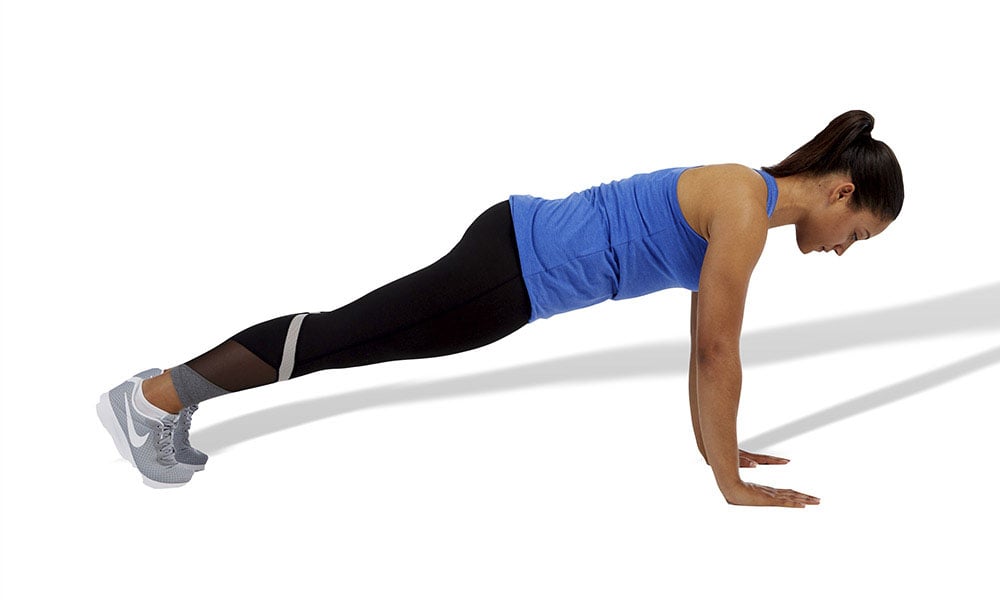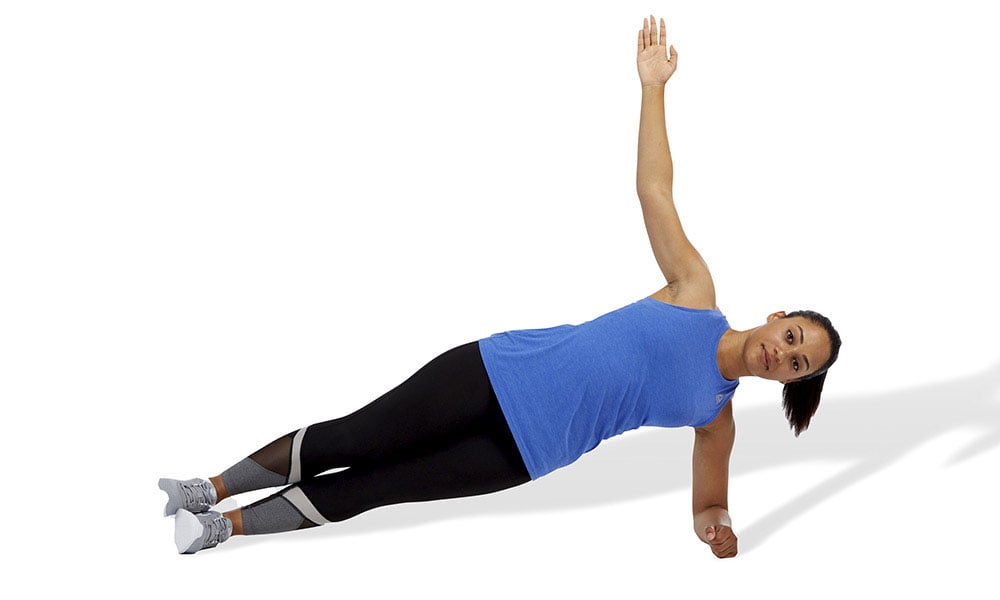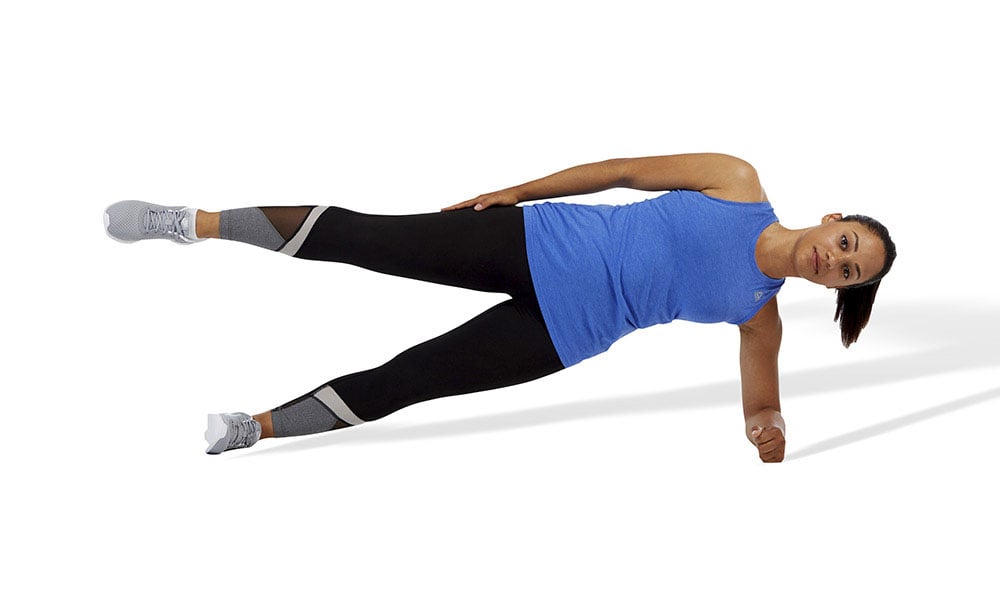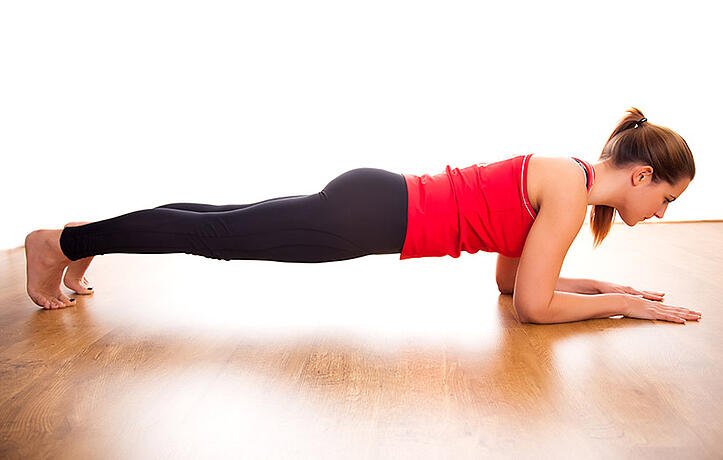By Melissa Hatton
Do you remember the recent social media “planking” fad where individuals would perform planks in some precarious and curious places? While some were photoshopped to express creativity and superhuman strength, when performed correctly, he plank is an excellent exercise for improving your core’s stability and strength when executed correctly.
It will also help to improve your posture, may help reduce low back pain, and strengthen your shoulders.
With so many varieties of plank exercises, how do you even know where to begin? Stick with me, and we will explore some of the most effective plank exercises and how to perform them correctly.
HOW TO PEFORM A STANDARD (STRAIGHT-ARM) PLANK

To perform the standard Plank exercise, position yourself with your arms extended and your hands on the floor placed directly under your shoulders, as in a push-up position. Dorsiflex your ankles so your toes are pointed into the floor and are supporting your weight. Your hands and your toes are the only parts of your body that are touching the floor.
Draw your navel in toward your spine and squeeze your glutes, paying careful attention to your lumbar spine, tuck your tailbone under to avoid any excessive arching of your lower back. You must keep your spine in proper alignment, so tuck your chin and look at the floor, but be careful not to let your head drop.
Allow your scapulae (shoulder blades) to melt down your back and put a little squeeze between the bottom points of them. I like to call this “setting” your shoulder. There should be a straight line from your heels to your shoulders.
PLANK VARIATION #1: HOW TO DO A PROPER FOREARM PLANK
The Forearm Plank is performed just like the standard Plank, except you support your weight on your forearms and your toes. To set up for this exercise correctly, you will position your forearms on the floor with your elbows placed in line with your shoulders. Often there is confusion about what to do with your hands while in this position. You have some options.
You can clasp them together, place your palms flat on the floor, or position them, so your palms are facing each other with your thumbs up. Initially, the position that is most comfortable for you is the one you should use; however, your goal over time should be to work towards keeping the forearms parallel and hands facing each other. While likely more comfortable in the beginning, clasping the hands together tends to promote a more rounded upper back and shoulder posture which may make it more difficult to set the shoulders and scapulae, and possibly reinforce certain muscle imbalances in the upper body and neck. The rest of the set-up is the same as the standard plank.
Draw your navel in toward your spine, squeeze your glutes, tuck your tailbone under, and finally, set your shoulders (pull your scapulae down and slightly squeeze the bottom points of your shoulder blades together). Again, you want to be able to draw a straight line from your heels to your shoulders.
PLANK VARIATION#2 : HIP EXTENSION

Now that you’re an expert in performing the Plank let’s kick it up a notch and create some further challenges! Adding a hip extension to any plank exercise is a great way to challenge your strength and stability.
If you perform a prone plank on either your hands or your forearms, simply further contract your glutes on one side, extend your hip, and raise your straight leg off the floor. Maintain proper alignment to avoid an arch in your lumbar spine. You can hold this position for the desired amount of time or perform some repetitions. You have the option of performing repetitions with the same leg or alternating your legs.
PLANK VARIATION #3:
HOW TO DO THE SIDE PLANK
The side plank is an excellent exercise for activating and strengthening your Transverse Abdominis (deep abdominal muscle that supports your spine), but also your internal and external obliques, gluteus medius (outer hip muscle), infraspinatus, and teres minor (rotator cuff musculature), and the quadratus lumborum (muscle that supports the pelvis and spine). These are muscles that aren’t often challenged during daily life activities. An exercise like the side plank is a great way to target these often-underused muscles and create greater stability and strength in these above areas.
Like the traditional plank, the side plank can be performed either with the arm extended and the hand on the floor or from the elbow with the forearm on the floor. Whichever position you choose, it is important that the shoulder is in proper alignment while supporting your body weight.
For this plank exercise, setting the shoulder is done in the same manner as with other planks: draw your scapulae down and put a slight squeeze between the bottom points of your shoulder blades. Whether you are performing a side plank on the right side or the left side, be sure you “set” both shoulders, as this will help with balance, alignment, and core stability.
Now that your upper body is positioned correctly, what do you do with your legs? You have options here, too. If you’re starting, you can flex the bottom leg at the knee to help support the weight of your body while keeping the top leg straight with your foot on the floor. Next, raise your hips to create that nice straight line from ankle to shoulder.
If you are confident in your shoulder stability and core control, try straightening both legs. Stack one leg on top of the other, lift your hips and strive for that straight line. For a larger base of support, place your top leg in front of your bottom leg with the heel touching the toe of your other foot.
Again, you want there to be a straight line from ankles to shoulders. As with other plank exercises, draw in your navel, squeeze your glutes, tuck your tailbone and chin, and be sure you have set your shoulders correctly.
PLANK VARIATION #4: PERFORMING A SIDE PLANK WITH HIP ABDUCTION

You can create a further challenge to the side plank by adding hip abduction. From your side plank position, contract the gluteus medius (outside of your hip) and lift your straight top leg. You must lead the lift with your heel so you activate the appropriate muscles to perform hip abduction. Hold this position for the desired length of time.
Another level of challenge, and one that is often performed while practicing yoga, is to raise the top arm toward the ceiling. In this position, the arms will resemble a “T,” and the legs will look like a sideways “V.” This position is very challenging to the core and the shoulder and should only be attempted when there are no kinetic chain dysfunctions or compensations observed at the shoulder girdle.

